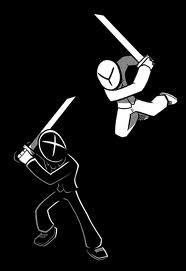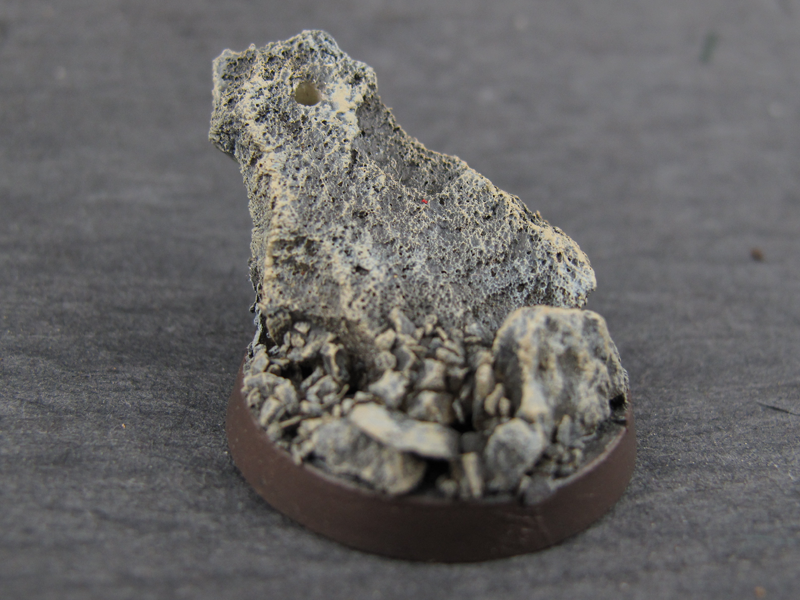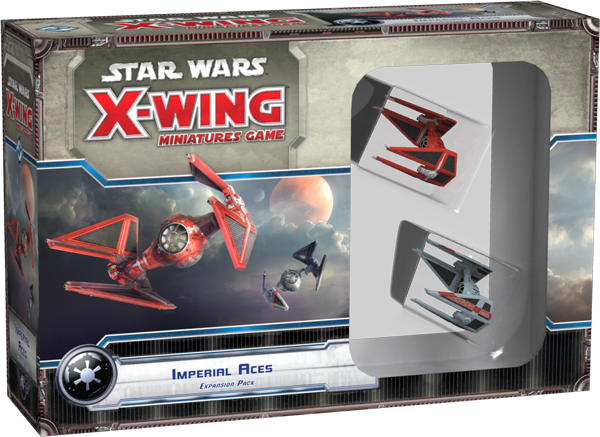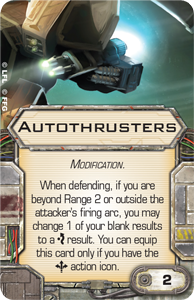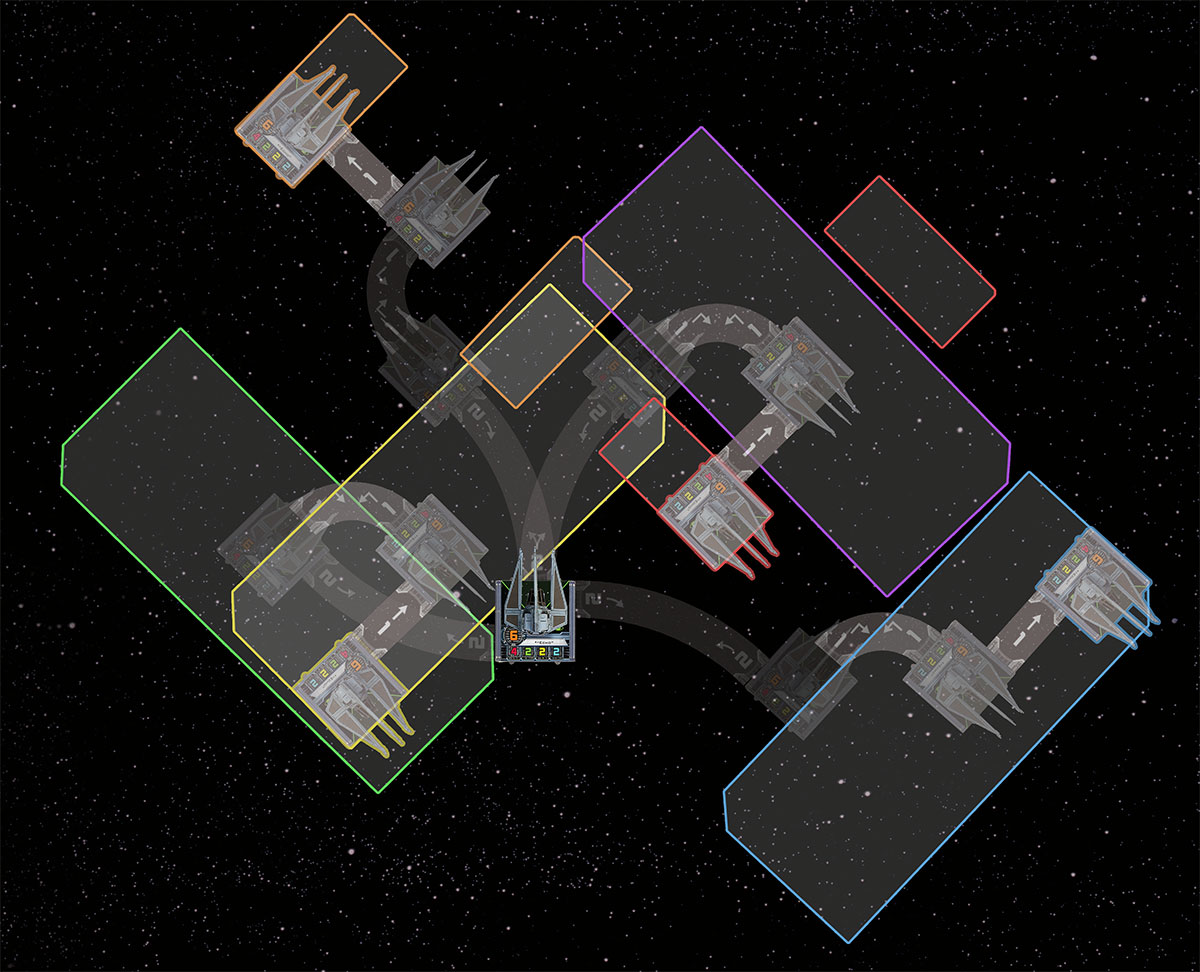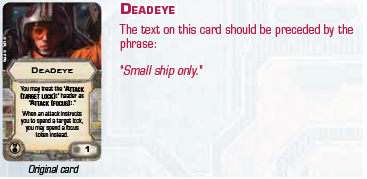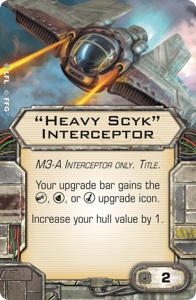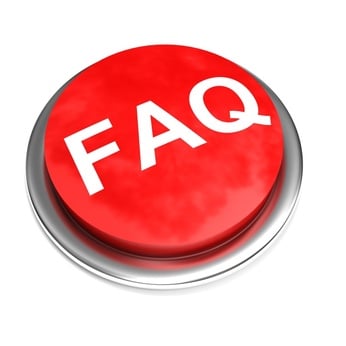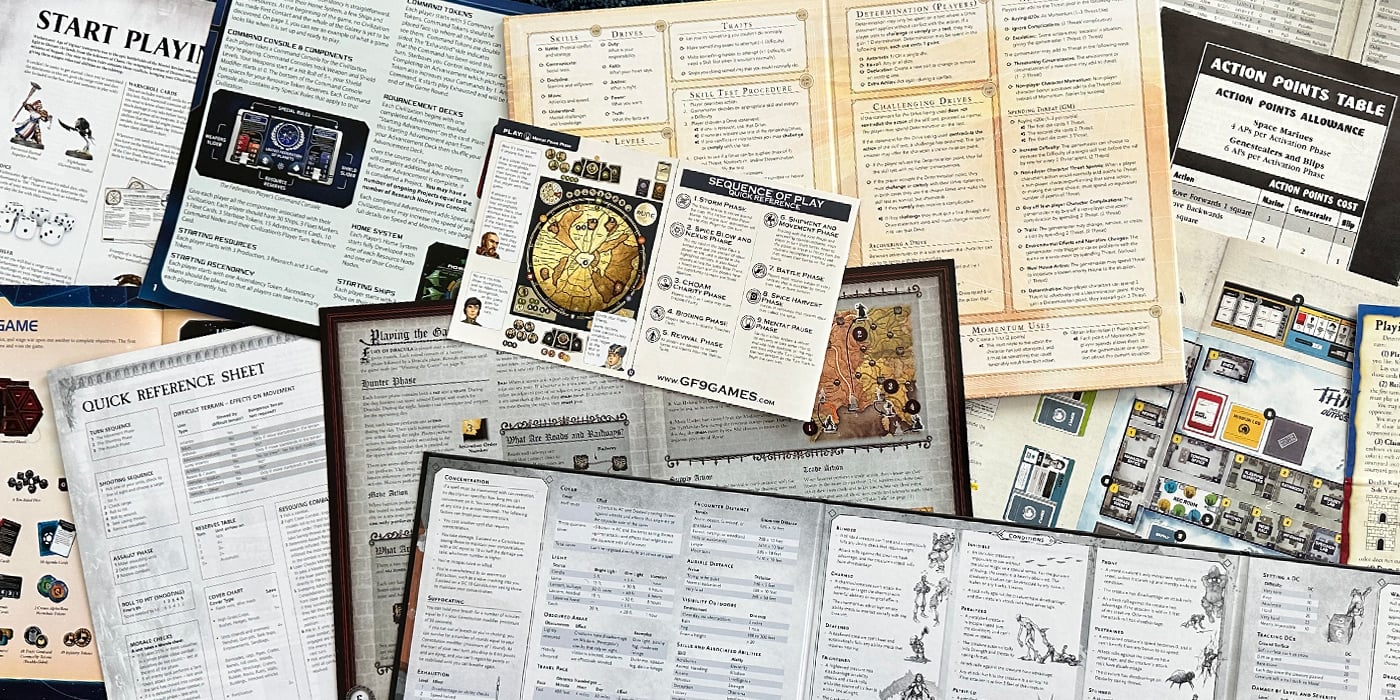Editorial: Keeping X-Wing Balanced
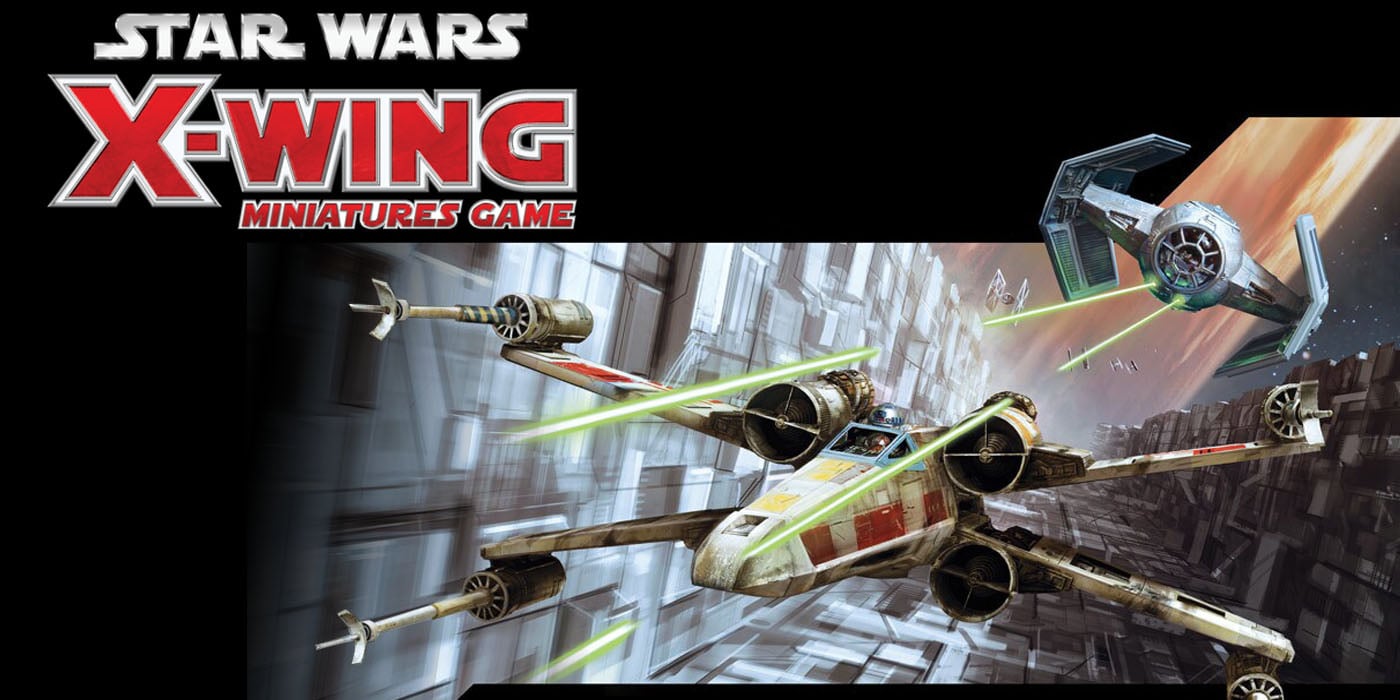

ChahDresh wonders if FFG’s evolving approach to game balance is taking a page from another industry’s manual.
Competitive balance is a tricky thing. Do you balance by faction? By unit? By upgrade? Do you allow small things to become powerful because it helps the higher-level balance? Do you let bigger names be more powerful because that’s cool?
And, if you get it wrong, what do you do after your product is released?
Board games have had this problem as long as they’ve existed. In chess, which has a perfectly symmetrical board with identical resources for each player, there’s still a tournament requirement for players to swap between black and white to even out the advantages of going first or second. Go is even more symmetrical, with its neutral board and nondescript pieces. Yet competitive Go gives a handicap to the player who goes second, and the handicap is adjusted depending upon the size of the board and the relative skill of the players. In other words, even these classic, symmetrical board games need external adjustments to achieve competitive balance.
Now try balancing something where asymmetry is a feature.
Game Design: An Abridged History
Video games encountered this problem early on. Mega Man games gave you different weapons when you defeated different bosses, and those weapons varied wildly in their utility. The infamous Metal Blades of Mega Man 2, which were strong against three of the eight bosses and virtually all the standard enemies, come to mind. But Mega Man’s weapons don’t need to be balanced against each other except to be cool; it’s a single-player game, so if something is overpowered, no harm, no foul.
Later games, on the other hand, were designed with multiplayer in mind. If something was broken or overpowered in those games, it gave one player an advantage at the expense of the other. This meant players could win more (or fewer) games than their skill would suggest- and that resulted in frustration. Players always look for perceived imbalances to help explain their defeats (and protect their egos); it’s how the human brain is wired. Witness how many people are willing to throw away perfectly good dice because these avatars of chance are perceived as negative influences (“Those are bad dice!”). When there actually is imbalance, as inevitably happens in asymmetrical games, it adds fuel to the fire.
That’s okay when that’s what the players sign up for. Take sports games: when sports games model actual teams, some teams will be better than others. Taking the Cleveland Browns is never going to be a smart choice for someone who wants to win. It doesn’t matter: someone is still going to pick the Browns, even if they’re terrible. That player has made a deliberate choice to weaken himself; he has adjusted his own expectations.
Like Headaches & Complaining? Be a Game Designer
If, on the other hand, a player goes into the game with the expectation that his choice of faction/character should not negatively impact his chances of winning, then competitive imbalance is a big problem. That goes double if the game developers tout their game as a competitive one, and triple if the company actively promotes competitive events.
Game designers avoid or design around imbalance to varying degrees– again depending upon how the game is marketed. The most common method is playtesting to find and pre-emptively fix imbalances. Starcraft II famously had a billion matches played before its commercial release, in no small part because the game has a professional circuit. However, no amount of playtesting will ever be enough. Testing environments simply aren’t the same as live ones.
Video game companies have tackled this head-on by changing the games themselves. Universal internet connectivity removed the technical challenges of doing so. These days, there is an expectation that game developers tweak their games on a frequent, even weekly, basis. This rarely takes the form of large-scale system changes, and often is as subtle as numbers tweaks. These “balance patches” can radically shift player behavior, turning the awful into the awesome (and vice versa), all in the name of balance. The pace of these changes is high; the results… not always as intended.
(It should be noted that this hasn’t relieved the pressure on game developers to “get things right”. On the contrary, players now spend an incredible amount of time recommending, advocating for, and second-guessing balance changes. The major impact seems to be ever-more-stringent demands for balance- whereas a 10% imbalance might have been acceptable before, nowadays a 5% difference is cause for torches and pitchforks. One major game developer, as an April Fool’s joke, created a mock-up of a Game Balancer game. The responses were disturbingly positive.)
How Dark Eldar Shook My Faith
However, even when balance isn’t achieved, there’s a psychological benefit to updates of this kind. It gives fodder for the community to chew on and for columnists to drone on about (ahem), and player engagement is always good. More importantly, it buys goodwill. It communicates to the players, “We want what you want. We care about what you care about. We know there’s a problem, and we’re working on it.” Changes are an opportunity for the developer to demonstrate that they have a firm grasp on their game.
There is value there that can’t be quantified but is very real. Think about how many TV shows get panned because the showmakers don’t appear to have a plan. But it’s not a guarantee that it’ll work out right. Opportunities can sour if they’re mishandled. Here’s a personal example. While I write for this site about X-Wing, I’m also a long-time Warhammer 40K player. One of my armies is Dark Eldar. Dark Eldar are a raiding force, fast and deadly but fragile. They get in, do their business, and get out, or they break trying. Most games in 40K last around six turns; most Dark Eldar games are decided by the end of turn 2 or, at most, 3. When Games Workshop updated the Dark Eldar’s rules, they added a universal rule that gave the Dark Eldar stacking bonuses. The catch is that the bonuses only start in turn 2 and gradually get more powerful.
This design decision shook my faith in the designers. How could they think this was a good design? Bonuses that stack in later turns work the opposite of how the army as a whole operates, which is maximum force early on. If your bonuses don’t affect the outcome, you might as well not have them, and because these bonuses kicked in so late (well after the decisive early turns) they never affected the outcome. It was enough to make a player wonder if the game designer actually played his game.
The point of this anecdote isn’t to hate on Games Workshop; they make lovely models, and I still have all of the very substantial investment I made in their game. Besides, there are enough Warhammer players on this site who are even now saying, “Hey, only we get to hate on GW!” Peace. The point is that it can be very damaging to give your customers the impression of cluelessness. Balance tweaks are opportunities for the developer to demonstrate that they’re on top of their game. The less frequently you make such adjustments, the more pressure there is to ‘get it right’ on those few opportunities, and the more damaging it is when you don’t.
These principles apply especially to wargaming. Wargaming, for the longest time, has operated on its own (much slower) rhythm. Balance issues would be addressed with rules changes to printed books, with intervals measured in years or even decades. A weak faction or unit could be weak for a very, very long time. That, however, has begun to change.
Speaking of X-Wing
The A-Wing and the TIE Interceptor had trouble getting on to tables for quite some time. The A-Wing was overcosted for its low firepower; the Interceptor couldn’t find the sweet spot between “deadly but fragile” and “expensive canon fodder”. FFG’s response was to release the Imperial Aces and Rebel Aces packs, which included new titles and upgrades specifically to make those ships better. It was the cardboard version of a video game’s balance patch, except that FFG was able to charge money for it. It was also somewhat gross in approach: “Oh, your ship is too expensive? Here, make it two points cheaper.”
When even that didn’t quite do the trick, FFG focused in on the exact problem: the A-Wing and Interceptor are arc-dodgers, and so died horribly against turret ships, which have no arc to dodge. Autothrusters to the rescue- an upgrade packaged with the Starviper, but really a late fix for the A and Squint. Autothrusters didn’t make those ships immune to turrets, but it gave them a fighting chance- and Jake Farrell and Soontir Fel blasted their way on to top tables worldwide.
Errata to the Rescue
Since then, other ships have gotten fixes, with varying degrees of success. The Twin Laser Turret turned the Y-Wing from a rarely-seen control ship to a strong supplemental damage source. Integrated Astromech didn’t address the T-65’s biggest problem of flying like a brick and didn’t shift the math enough to make it a premier jouster. The TIE /X7 title turned the TIE Defender from an albatross to a powerhouse.
That’s the cardboard way to do balance patches- and as the examples show, it’s as imprecise as ship development is. The X-Wing fixes maybe undershot, the Defender fixes overshot, and the Y-Wing is just about right. Moreover, cardboard fixes work well enough for buffs, but not very well to deliver nerfs. People aren’t happy buying something that has the explicit purpose of making their toys worse. There does, however, exist another way to do balance fixes, one very much akin to video games: updating the errata section of the FAQ.
The first time FFG used the FAQ to address a balance issue was when FFG changed the decloaking rules. While it was a change to the rules writ large, it was truly targeted at the high PS Phantoms. Whisper and Echo, as we’ve discussed before, were single-handedly driving Pilot Skill wars and initiative bids to absurd levels, thanks to their incredible powers of repositioning under the old rules.
The nerf had to be accomplished by FAQ, and it served its purpose. Whisper is still strong, but no longer the world-devouring monster she used to be, and Echo has all but vanished. A quiet spell ensued for a time, with FFG content to use cardboard fixes to buff underperforming ships, but a great disturbance in the Force drove the developer to action: triple U-Boats.
As with cloaking, this was a good idea by FFG that got completely out of hand. The Deadeye/torpedo/Extra Munitions/Guidance Chips build was listed in one of FFG’s preview articles; it was very much an intended build. It was also just too much. The alpha strike potential of triple U-Boats was so overwhelming it killed Rebel regen builds completely and chased 4BZ and Thug Life right off the tabletop. The meta was being grossly distended. Out came the nerf bat…
Deadeye was the heart and soul of the triple U-Boats build, the one part that could not be replaced. The change was surgical: no other big ship build made use of Deadeye, and no change to the other parts of the build would have had the same impact. It worked. While one unreformed U-Boat player did make the cut at Worlds without Deadeye, the dominance of the build was broken.
At the same time, though, an experiment was begun. There was another change in that FAQ that was made for balance purposes. This time, it wasn’t to rein in an overpowering, meta-distorting menace: it was to try and rehabilitate one of the game’s worst ships.
Scyks & Mines Oh My!
The poor, poor Scyk Interceptor hasn’t seen much play. The reasoning is simple: for more points than a TIE Fighter, it has at best the same firepower, worse pilot abilities, only marginally better survivability, and a worse dial. (The firepower is actually inferior because Scum has no Howlrunner equivalent- a reminder that balance exists beyond the ship level.) If you took the Heavy Scyk title, you got more dakka, but blew its cost-to-durability ratio right out of the water. But maybe, maybe if you got some extra hull to go with the title…
Time will tell if this change will take. In the abstract it makes sense, but it might not be enough (poor, poor Scyk Interceptor!). More interesting is the long-term implication. We learned later that the revised Heavy Scyk title is coming with the new Scum epic ship. Okay, fair enough. But FFG didn’t wait for that to be released to errata the Heavy Scyk title; they went ahead and did it beforehand. Moreover, releasing physical copies of the errata’ed card is not, strictly speaking, necessary. Once the change was made to the FAQ, releasing new copies of the card is almost a formality.
Nor was FFG’s attention limited to ships. Cluster Mines were buffed in the same FAQ– merely as a balance change because the card wasn’t strong enough. It makes a lot of sense. Cluster Mines drop three bombs for four points. An enemy ship had to hit all three of them to take more damage than the already-existing Proximity Mine, which is cheaper and much easier to land. Now, an enemy only has to hit two mines for Clusters to trump Prox, and Clusters’ maximum potential is very attractive. Lo and behold: we have already seen many players shift from Conner Nets to Cluster Mines.
This was a balance change targeted at a specific upgrade card, a much more granular change than trying to balance individual ships. As with the Heavy Scyk change, this sets precedent for more changes in the future– changes driven partly because seeing lots of different ships and upgrades is cool, and partly because of big-picture game balance concerns. (What’s the big-picture balance concern for Cluster Mines? Well, Cluster Mines are best against large ships which take up a lot of space, and ships that like to fly straight. Things like, oh, I don’t know, Scum double-big-ship lists and TIE Defenders.)
Where will It End?
There is no technical or logical limit to how often they could use the FAQ like this. “Fixing” the T-65 could be as simple as lowering the ship’s cost in the errata, or FAQing in a boost icon. I can see it now:
Q: Did you mean for the X-Wing to have boost?
AdvertisementA: Of course we did. The X-Wing’s always supposed to have had boost. Add a boost icon to all X-Wing pilot cards. Oh, and pretend it was there all along.
If this were a video game, there’s little doubt in my mind that something like that would have happened by now. For a miniatures game, though? Typically, when FAQs affect balance, it’s in the form of “clarifications” to existing rules to correct unintended (or poorly anticipated) player behavior. Using it to make this sort of granular balance change is new ground. It remains to be seen if there’ll be any backlash against having to have the FAQ not just as a reference, but as an actual rules repository. Part of the appeal of wargaming is that it’s very tactile, and everything you need for it is physically there; relying on the FAQ works against that. And it’s very prudent of FFG to conduct this experiment with the unloved Scyk rather than the beloved X-Wing.
Perhaps this will be the new normal. Perhaps nerfs will be released via FAQ, while buffs are delivered via cardboard. The pace of such changes could also greatly increase, and be driven by a few months’ worth of tournament results instead of years’. That would be unprecedented in wargaming.
~We shall see.
ChahDresh is an amateur writer and an even more amateurish X-Wing player. Let him know what you think about balance-by-FAQ below.

